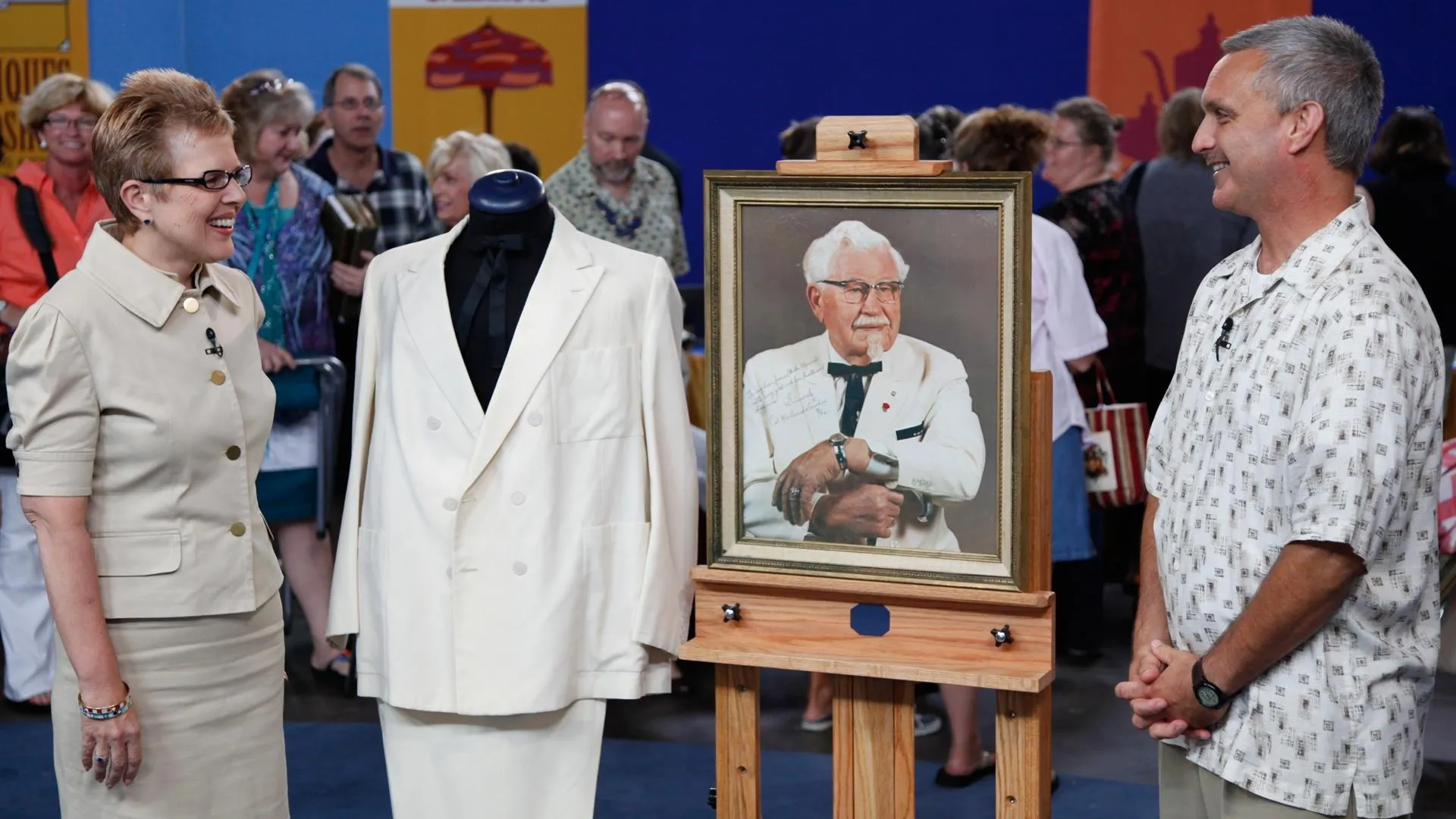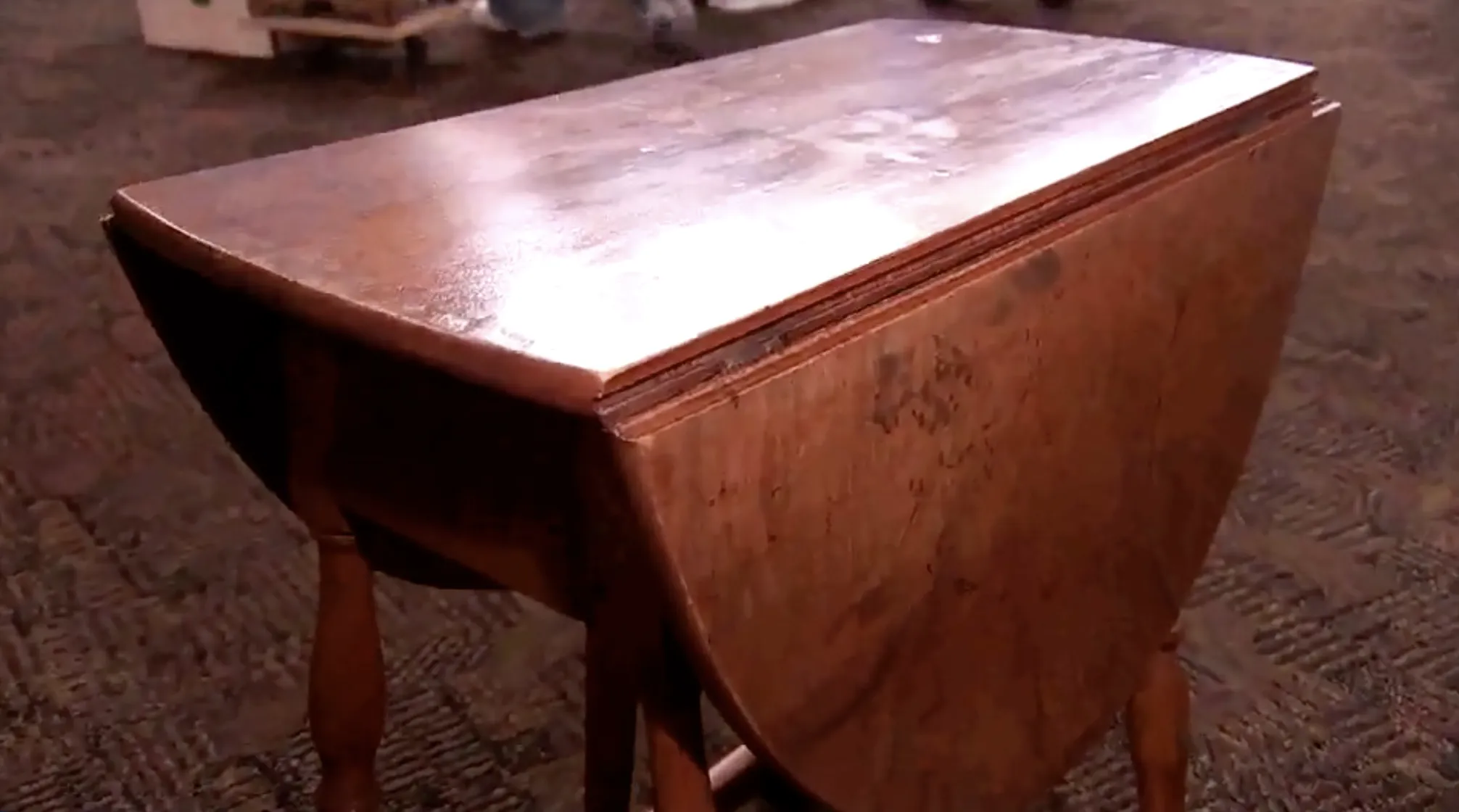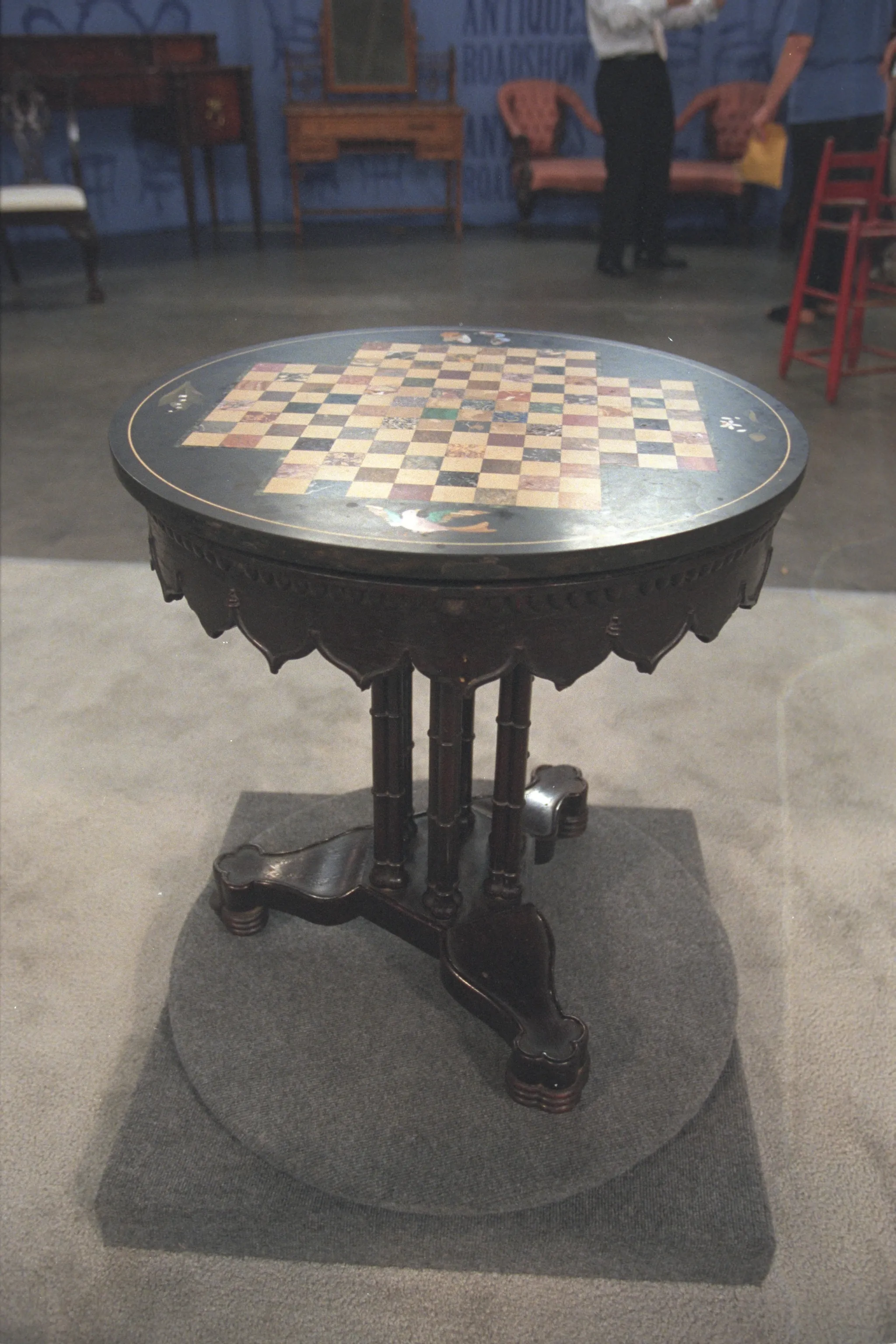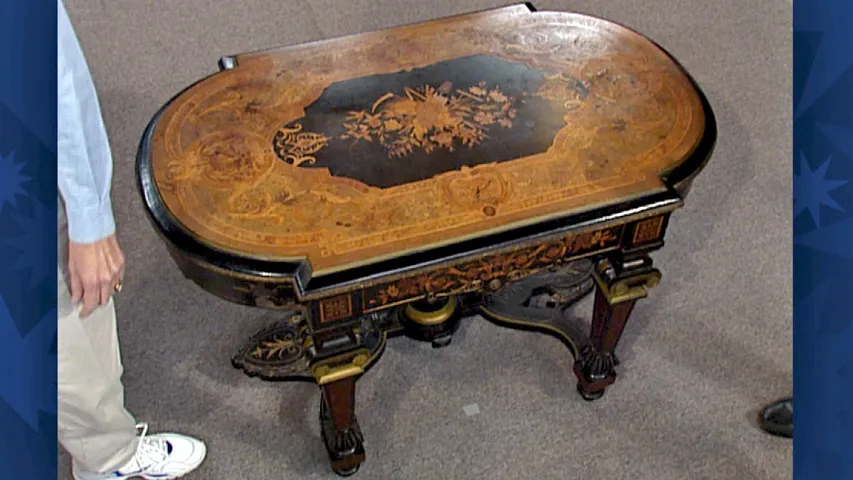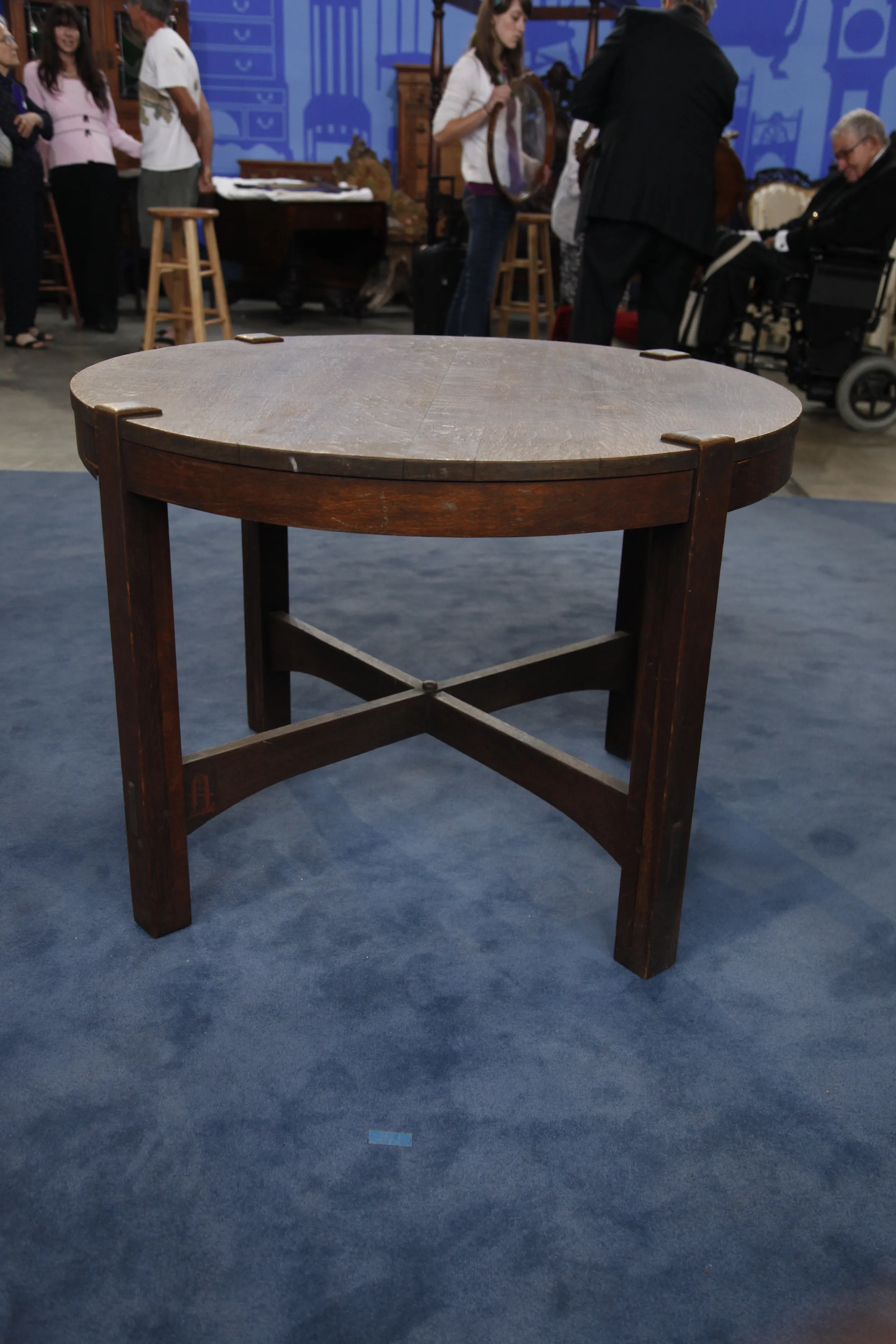GUEST: This is a table that my grandfather made in the Depression. There's a couple pieces of family lore about it. One is that when he finished the table, a local physician in Fort Thomas offered him a Model T Ford for the table.
APPRAISER: Wow.
GUEST: Obviously, he turned that down.
APPRAISER: When I first looked at it, I was trying to figure out if it was from the Depression era. And the thing about this kind of a table is that they made them from the late 1800s all the way up to the Depression, conceivably. And this was probably...I would imagine it was a winter project. Did he do other things?
GUEST: He was a carpenter.
APPRAISER: Well, that makes sense. I would call this a console table or a card table. Card table. And this is called marquetry and parquetry inlay.
GUEST: Mm-hmm.
APPRAISER: Parquetry inlay is geometric, and marquetry inlay is figural. He laid this out with a compass, I'm sure and probably cut each one of these pieces with a chisel, and laid them in there, and as he went along, everything was going along real regular and normal, and then all of a sudden, he gets to this band, and this is almost like abstract or free-form. He did all these random pieces, and I think that's the most interesting part of the table. But they're taking all these different kinds of wood. You've got maple and cherry, oak or chestnut, walnut, and then the dot in the middle, which is ebony.
GUEST: Now, this was another part of folklore is that that was from the cane of a Civil War veteran in Fort Thomas. I heard that Pop-- we called him Pop--stole the guy's cane, cut a piece off and then gave it back to him. And that sounds more like Pop. (laughing) He was a rascal.
APPRAISER: Well, the great thing about it is that he made it a cohesive design. And it looks to me like it's probably still got its original finish on it. And the other thing I like is the way that he sort of tapered it down underneath. That's a nice characteristic. Because when you're sitting across the room looking at it, I think that gives it another nice little architectural dimension.
GUEST: And he supposedly took his drawings that he used, how many pieces of wood that he used and everything, and they're in the base here. And as far as I know, nobody's ever seen it since he finished it.
APPRAISER: Well, guess what?
GUEST: What?
APPRAISER: We looked in there.
GUEST: Did you?
APPRAISER: (both laughing) We did. And we didn't find anything.
GUEST: Nothing in there? One piece of folklore down the tubes. (laughing)
APPRAISER: This is a great decorator piece, and it would be a really nice focus item for you. I would say insurance value on this would probably be around $3,500.
GUEST: I appreciate it.
APPRAISER: Well, you're welcome.

